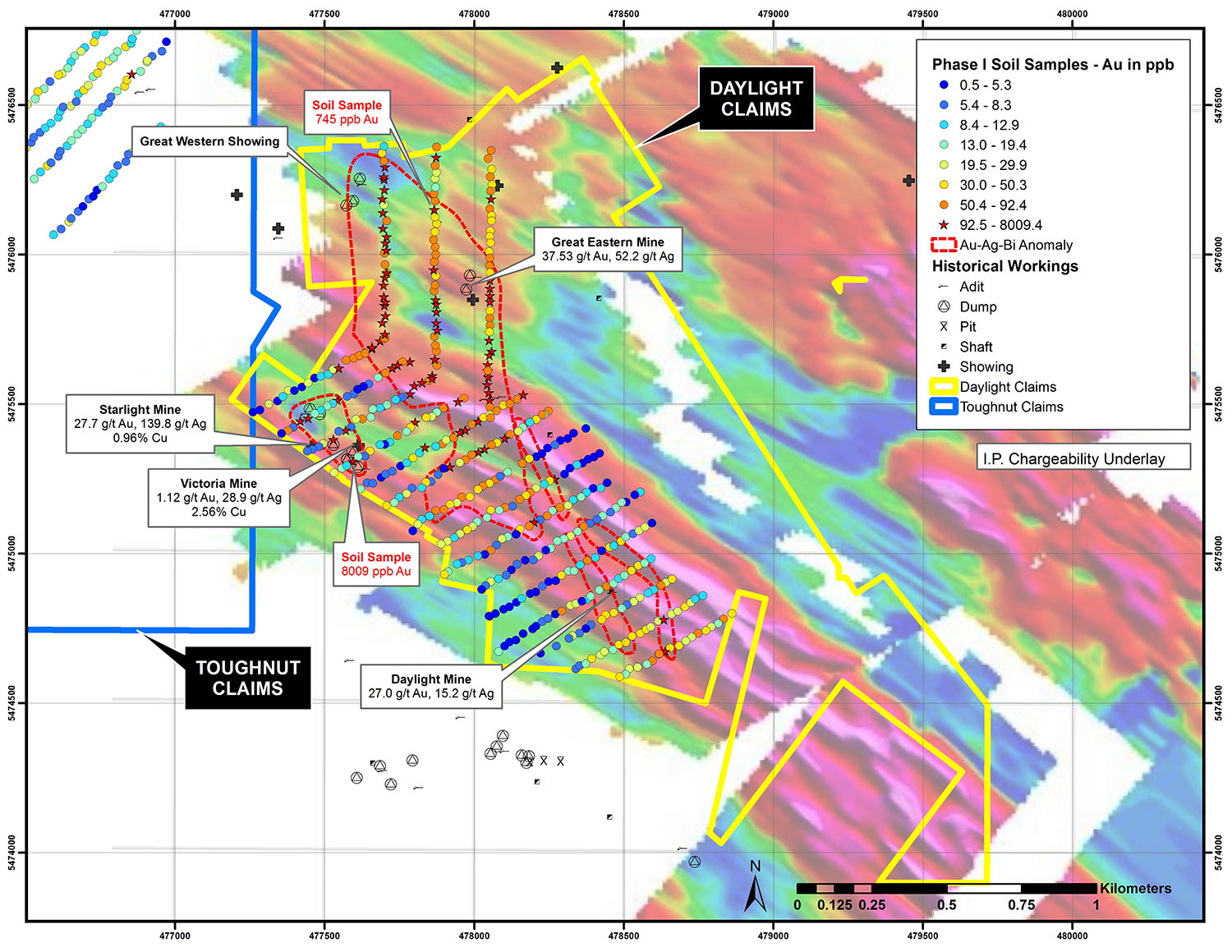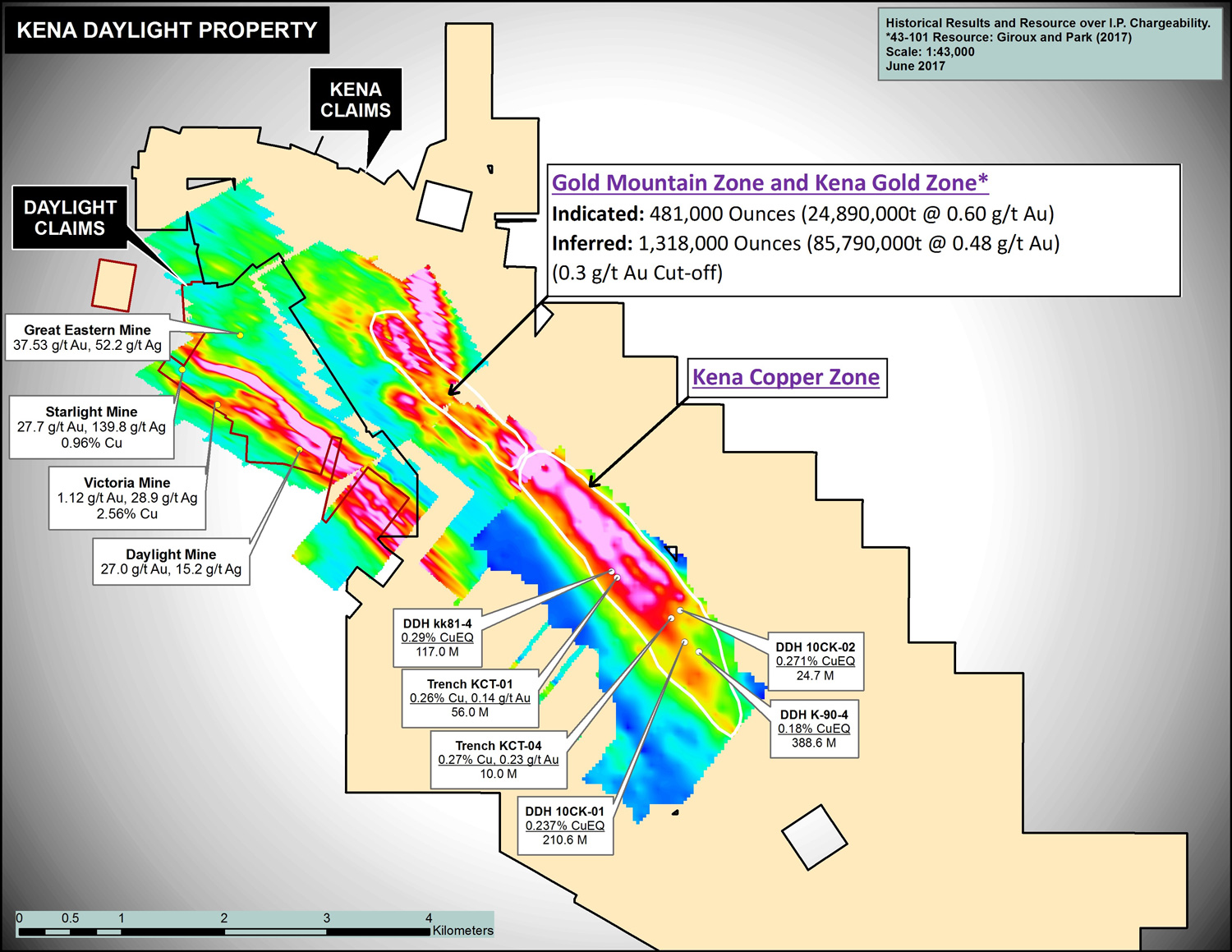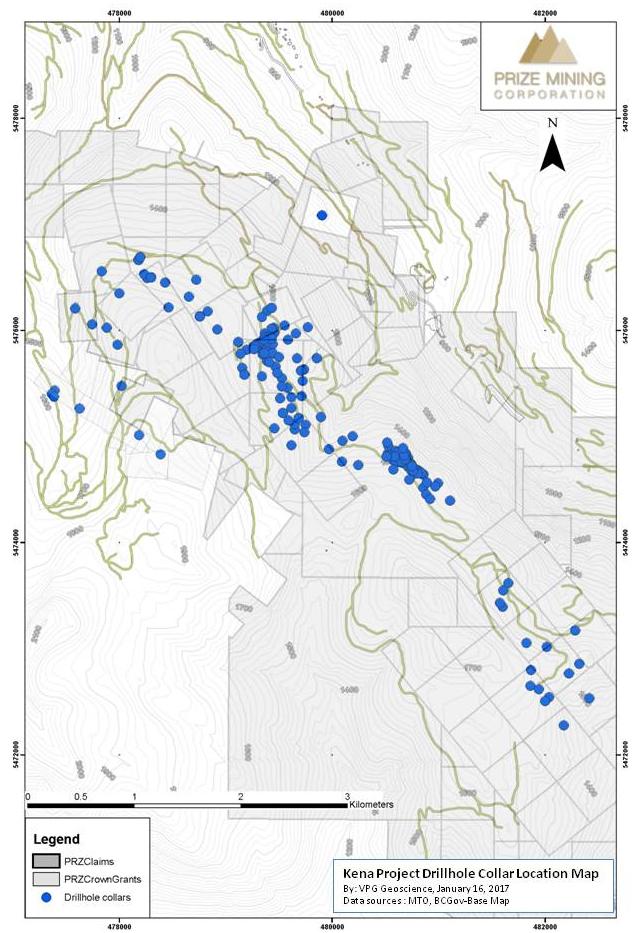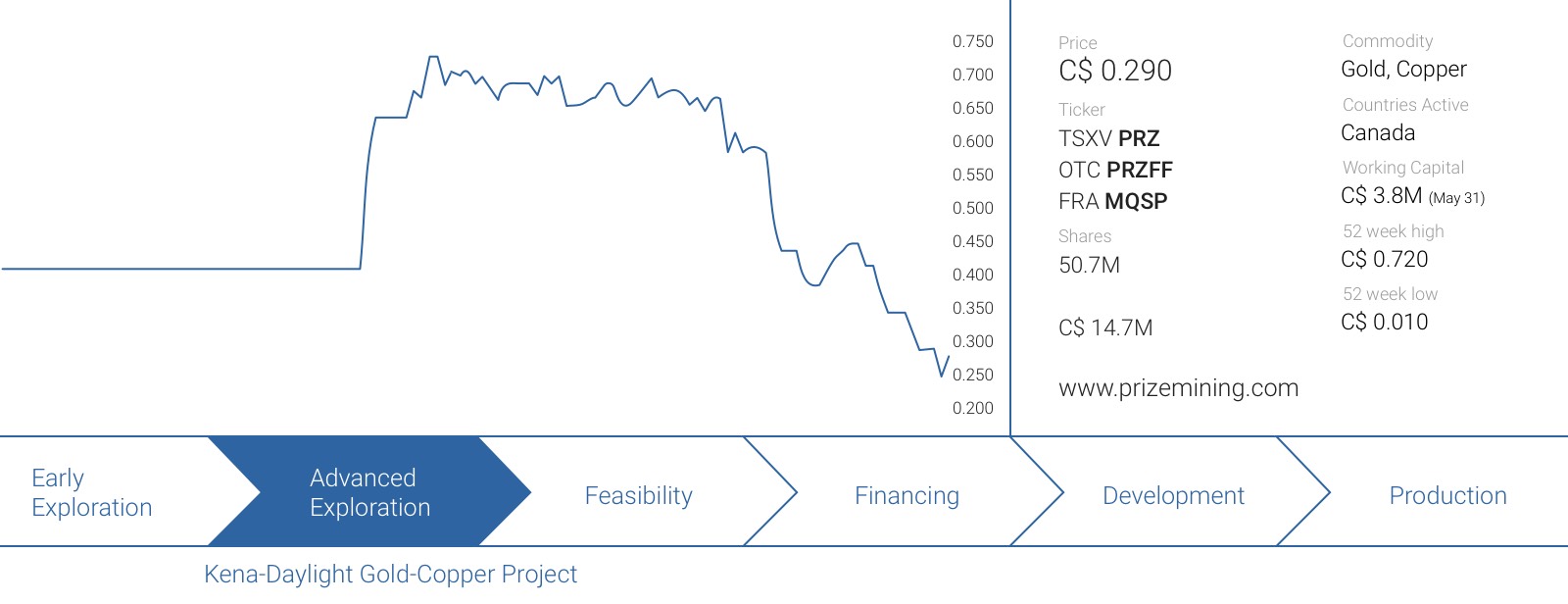Prize Mining (PRZ.V) has released the assay results from a first batch of soil samples on its Daylight property in British Columbia, Canada. The company has now taken in excess of 1,000 samples and the first samples have confirmed the existence of at least two geochemical trends on the Daylight zone.
The Daylight-Starlight trend returned 9 samples with a grade higher than 100 ppb Gold ( 0.1 g/t gold), of which the best sample returned a gold value of 8,009 parts per billion (which is approximately 8 g/t gold). This is obviously a great result for a surface sampling program and the 8 g/t is in fact the highest gold-in-soil sample result in the history of the Silver King shear system since it was explored in the 70’s.

On top of that, the sampling program confirmed a second trend, the Great Western anomaly that now already has a surface area of 300 meters by 1,000 meters for an area of 30 hectares. 48 samples have returned gold grades of in excess of 100 ppb (0.1 g/t) whilst there’s a ‘cluster’ of anomalous soil samples which returned grades of up to 745 parts per billion gold. Needless to say that’s a really intriguing target, and Prize Mining will follow up on that cluster of higher grade results by initiating a (300 meter) trench program at that specific zone.
We also had a quick chat with CEO Feisal Somji to discuss these assay results, as well as to get a better idea about the company’s upcoming drill program on the Daylight and Toughnut properties.
Was this the first time the greater area around the Great Eastern Mine and the Great Western showing was sampled? Did the assay results live up to your expectations?
No it wasn’t the first time. In 2002, one of the previous owners of the property, Sultan, collected rock samples and drilled 4 holes.On top of that, Sultan also collected soil samples over a 100m spacing E-W and NE-. The distribution of 2017 soil geochemical anomalies confirms a widespread distribution of gold mineralization; including a cluster of 3- 95th percentile Au results that plot within 100m of a best historical Au-in-soil result of 1259 ppb Au.

The results from the Toughnut exploration program will be released shortly, but from a structural point of view, would you expect the direction of the trend to be similar to what you see at the Great Western-Eastern anomaly?
Yes. At the district scale, the overwhelming controlling structure is the northwest –trending Silver King Shear – a system of shears that envelops the Toughnut, Daylight, and Great Western-Eastern trends. Additionally, north to northeast trending fault/shear structures are also apparent at both the Toughnut and Daylight properties and locally control the distribution of gold mineralization.
Prize took a total of 1289 soil samples, what percentage of these still have to be released?
Around 65% of the soil samples still have to be released.
Are you still planning to trench the Black Witch zone, or will you focus on other parts of the property?
A follow-up detailed prospecting program is planned for the Black Witch zone, along with a contingency for two to three drill holes, depending on 2017 surface result prioritizations. So yes, the Black Witch zone is still one of our priorities.
The Daylight property has (at least?) four past-producing mines. Although the total tonnage mined from these mines was very low, could you perhaps give us an impression of how we should ‘imagine’ these past producing mines? Are we talking about little adits in the ground or basically just some rocks being chopped off from a hill?
Each of the Daylight, Victoria, Starlight, Great Eastern, and Great Western locations includes turn-of-the-century underground workings complete with adits containing old rail beds (sometimes with carts), supporting shafts, and sizeable dumps ranging from 5m to over 30m across.

You released some intriguing results from a sampling program at the Daylight Property, and are gearing up for a first drill program in September. Could you elaborate on the size of the drill program and what you’d like to accomplish?
For the entire Daylight property, we now have planned 19 drill holes. Most of the proposed drilling will depend on results from trenching, soil sampling and Mag survey. The trenching program is designed to expose critical transect across structures of interest in order to better define mineralization and structural controls. The drill program has two main purposes:
A) Locate and define ore shoots beneath known working and trenches in support of completion of bulk sampling planned for 2018.
B) Better define new mineralized zones
In your recently filed MD&A report, Prize is already discussing taking a bulk sample; will the size and position where the bulk sample will be taken be determined by this year’s drill program? How sizeable will the bulk sample be? Which (BC-based?) plants would very likely process your bulk sample?
Yes, the ultimate location(s) of bulk samples will be determined by the results of this year’s drilling and trenching programs, in tandem with the results of the historical data compilation and available geophysics. The number and size of samples is contingent on the 2017 results. We haven’t decided about a location to process the rock just yet, but we will obviously be in a much better position to determine the best way to move forward with our bulk sampling program after completing the next phases of our exploration program.
Thanks, Feisal!
Disclosure: Prize Mining is a sponsor of this website, we have a long position. Please read the disclaimer

